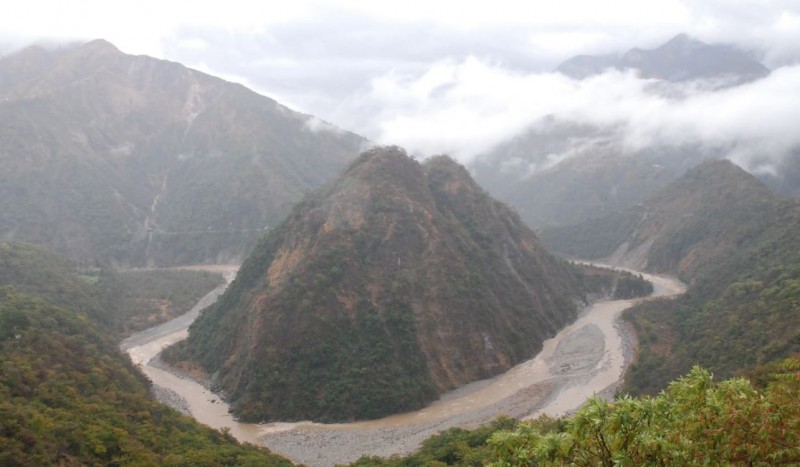
Introduction
The Yamuna River, also known as the Jumna, is one of the major rivers in India. It is the largest tributary of the holy Ganges and plays a significant role in the cultural, historical, and environmental landscape of the country. In this article, we will explore some interesting facts about the Yamuna River, its origin, cultural importance, environmental challenges, conservation efforts, and more.
The Origin of Yamuna River
The Yamuna River originates from the Yamunotri Glacier in the Uttarkashi district of Uttarakhand, a state in northern India. It is situated at an altitude of approximately 6,387 meters above sea level. The river flows through the states of Uttarakhand, Himachal Pradesh, Haryana, Delhi, and Uttar Pradesh before merging with the Ganges at Allahabad.
Historical Significance
The Yamuna River has immense historical significance. It has witnessed the rise and fall of various empires and has been mentioned in ancient Indian texts and scriptures. Many historical sites, such as the Taj Mahal, Agra Fort, and Red Fort, are located along its banks, showcasing the rich heritage of the region.
Cultural and Religious Importance
The Yamuna River holds deep cultural and religious importance in India. It is considered sacred by Hindus, and millions of devotees take part in religious rituals and bathing ceremonies along its banks. The river is associated with Lord Krishna, who is believed to have spent his childhood in the region. The annual Yamuna Aarti attracts a large number of devotees and tourists.
Environmental Challenges
Despite its cultural and historical significance, the Yamuna River faces numerous environmental challenges. It is highly polluted due to industrial discharge, untreated sewage, and agricultural runoff. The river's water quality has deteriorated significantly, posing a threat to both human health and aquatic life.
Efforts for Conservation
To address the environmental challenges faced by the Yamuna River, various conservation initiatives have been undertaken. The government has launched the Yamuna Action Plan to improve water quality and reduce pollution. Additionally, awareness campaigns, river clean-up drives, and afforestation programs are being implemented to restore the health of the river ecosystem.
Impact on Human Life
The Yamuna River plays a vital role in the lives of millions of people. It serves as a source of water for domestic, industrial, and agricultural purposes. The river's basin supports a significant population, and its water resources are crucial for irrigation and sustaining livelihoods. However, the pollution and contamination of the river pose serious health risks to the communities residing along its banks.
Biodiversity and Ecology
The Yamuna River is home to a diverse range of flora and fauna. It supports several species of fish, turtles, and migratory birds. The river's ecosystem provides essential habitats and breeding grounds for various aquatic organisms. However, due to pollution and habitat degradation, the biodiversity of the river is under threat.
Industrial Pollution
The presence of industries along the banks of the Yamuna River contributes to its pollution. Untreated industrial effluents containing harmful chemicals and heavy metals are discharged into the river, leading to severe contamination. Efforts are being made to regulate industrial activities and promote sustainable practices to reduce the pollution load on the river.
Yamuna Action Plans
The government has implemented several Yamuna Action Plans to address the pollution issues. These plans focus on sewage treatment, solid waste management, and the regulation of industrial pollution. The aim is to restore the river's water quality and ensure the ecological well-being of the Yamuna.
Water Quality and Contamination
The Yamuna River faces significant challenges regarding water quality and contamination. The presence of high levels of pollutants, including faecal coliform, heavy metals, and pesticides, makes the water unfit for human consumption and irrigation. The government, along with NGOs and environmental organizations, is working towards improving the water quality through various measures.
Role of Yamuna River in Agriculture
The Yamuna River plays a crucial role in supporting agriculture in the regions it flows through. The river's water is used for irrigation purposes, benefiting farmers and contributing to the agricultural productivity of the surrounding areas. However, the pollution of the river poses risks to crop health and soil quality.
Yamuna River and Mythology
The Yamuna River holds a significant place in Indian mythology and folklore. It is often mentioned in ancient scriptures and mythological tales. The river is associated with the life and legends of Lord Krishna, who is said to have performed various leelas (divine acts) along its banks.
Famous Attractions along the Yamuna
The Yamuna River is dotted with several famous attractions that attract tourists from around the world. The Taj Mahal, one of the Seven Wonders of the World, is situated on the banks of the Yamuna. Other notable attractions include Agra Fort, Mathura, Vrindavan, and the Yamuna Ghat in Delhi.
Conclusion
The Yamuna River is not just a body of water; it is a symbol of India's rich cultural heritage, historical significance, and environmental challenges. While efforts are being made to restore its health and preserve its sanctity, more needs to be done to ensure the sustainable future of the river. It is crucial for individuals, communities, and governments to come together and work towards the conservation and rejuvenation of the Yamuna River.
Tragedy Strikes Manipur: Policeman Killed, Ten Injured in Violent Clash
Zohra Sehgal: Honoring the Legacy of an Iconic Artist on Her Death Anniversary
Happy Birthday, Alok Nath: Remembering the Legacy of an Extraordinary Actor